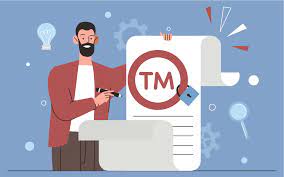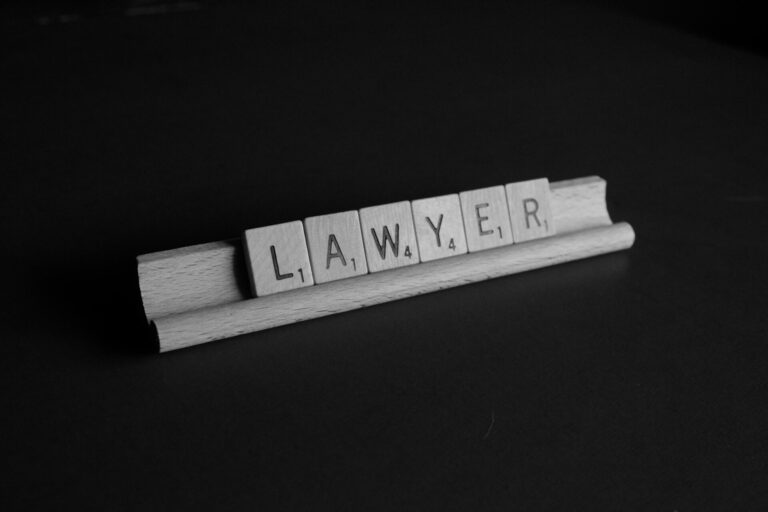Navigating the Patent Application Process: A Beginner’s Guide
By sheer coincidence, you find yourself with a brilliant idea that could revolutionize an industry. The next logical step is to protect your invention by filing for a patent. But where do you begin? Navigating the patent application process can be a complex and daunting task for beginners, but fear not. In this guide, we will walk you through the steps involved in obtaining a patent, from conducting a preliminary search to filing the application, and ultimately, securing the approval you seek. So, if you’re ready to turn your idea into a legally protected invention, let’s dive in and unravel the mysteries of the patent application process.

Understanding the Importance of Patents
Understanding the importance of patents is crucial for anyone involved in innovation and intellectual property. Patents provide legal protection for inventors and innovators, granting them exclusive rights to their inventions for a limited period of time. This protection is essential as it encourages innovation by providing inventors with the incentive to invest time, resources, and effort into their creations, knowing that they will be rewarded for their ingenuity.
Patents not only protect the rights of inventors, but they also promote economic growth and development. By granting exclusive rights, patents create a competitive advantage for inventors, allowing them to profit from their inventions. This encourages investment in research and development, leading to advancements in technology and improved products and services. Patents also foster collaboration and knowledge sharing, as inventors are encouraged to disclose their inventions to the public in exchange for legal protection. This exchange of knowledge stimulates further innovation and sparks new ideas and inventions.
Furthermore, patents play a vital role in protecting intellectual property rights. In today’s fast-paced and highly competitive world, intellectual property is a valuable asset. Patents help safeguard original ideas and prevent others from using or profiting from someone else’s intellectual property without permission. By granting exclusive rights, patents give inventors and innovators the ability to control and monetize their creations, ensuring that their hard work and creativity are properly recognized and rewarded.
Conducting a Preliminary Patent Search
To begin conducting a preliminary patent search, you need to gather relevant information about your invention. This step is crucial in determining whether your invention is unique and whether it meets the criteria for patentability. Here are five key steps to guide you through the process:
- Define your invention: Clearly articulate what your invention is and what problem it solves. This will help you identify the relevant keywords to use in your search.
- Use online databases: Utilize free online patent databases such as the United States Patent and Trademark Office (USPTO) website or the European Patent Office (EPO) database to search for existing patents or published patent applications related to your invention.
- Conduct a keyword search: Enter relevant keywords and phrases that describe your invention into the search bar of the database. This will help you find similar inventions or related technologies.
- Analyze search results: Review the search results and carefully read the patent titles, abstracts, and claims. This will give you an idea of the existing prior art in your field.
- Consult with a professional: If you find similar patents or if you are unsure about the patentability of your invention, it is advisable to seek guidance from a patent attorney or patent agent.
Preparing the Patent Application
Once you have completed your preliminary patent search and determined the uniqueness and patentability of your invention, it is time to move on to preparing the patent application. This step is crucial as it involves documenting every aspect of your invention in a clear and concise manner. To help you understand the key elements that should be included in your patent application, here is a three-column, three-row table that outlines the important sections:
| Section | Description | Emotional Response |
|---|---|---|
| Title | A brief, catchy title that captures the essence of your invention | Excitement |
| Abstract | A concise summary of your invention, highlighting its novelty and potential benefits | Curiosity |
| Detailed Description | A comprehensive explanation of your invention, including its structure, function, and operation | Confidence |
Filing the Patent Application
To begin the process of filing your patent application, it is important to gather all the necessary documentation and ensure that you meet the requirements set by the patent office. Here are the key steps to follow when filing your patent application:
- Complete the application form: Fill out the required forms provided by the patent office, providing accurate and detailed information about your invention.
- Prepare the patent specification: Draft a detailed description of your invention, including drawings, claims, and abstract, following the guidelines provided by the patent office.
- Pay the filing fee: Submit the required fee along with your application. The fee amount may vary depending on the type of patent and the patent office you are filing with.
- Submit supporting documents: Include any supporting documents, such as prior art references or proof of ownership, as requested by the patent office.
- File the application: Submit your completed application, along with all the required documents, to the appropriate patent office. Make sure to keep a copy of the application for your records.
Navigating the Examination and Approval Process
Now that you have filed your patent application, it’s time to navigate the examination and approval process. This phase involves the review of your application by a patent examiner at the relevant patent office to determine if your invention meets the requirements for patentability.
The examination and approval process can be quite complex and time-consuming. The examiner will carefully evaluate your application to ensure that your invention is novel, non-obvious, and adequately described. They will also conduct a search to determine if there are any prior art references that may affect your patentability.
During this process, you may receive Office Actions from the examiner, which are formal communications outlining any objections or rejections to your application. It is crucial to carefully review and respond to these Office Actions within the given timeframe to address any concerns raised by the examiner.
It is also worth noting that the examination and approval process can vary depending on the jurisdiction in which you filed your application. Each patent office has its own procedures and timelines. Therefore, it is essential to familiarize yourself with the specific requirements and guidelines of the patent office in question.
Frequently Asked Questions
What Are the Potential Consequences of Patent Infringement?
If you infringe on a patent, potential consequences include legal action, injunctions, damages, and even the possibility of having to pay the patent holder’s attorney fees. It’s important to respect intellectual property rights.
Can a Provisional Patent Application Be Converted Into a Non-Provisional Application?
Yes, you can convert a provisional patent application into a non-provisional application. This allows you to secure an earlier filing date, giving you more time to develop your invention and protect your rights.
How Long Does It Typically Take for a Patent Application to Be Granted?
On average, it takes about 22 months for a patent application to be granted. But keep in mind that the timeframe can vary depending on factors like complexity and the backlog at the patent office.
Is It Possible to File a Patent Application for an Invention That Has Already Been Disclosed to the Public?
Yes, it is possible to file a patent application for an invention that has already been disclosed to the public. However, the disclosure may impact the patentability, so it’s important to consult with a patent attorney.
What Are the Costs Associated With the Patent Application Process?
The costs associated with the patent application process can vary depending on factors like the complexity of your invention and the services you require. It’s important to budget for filing fees, attorney fees, and any additional fees that may arise.






